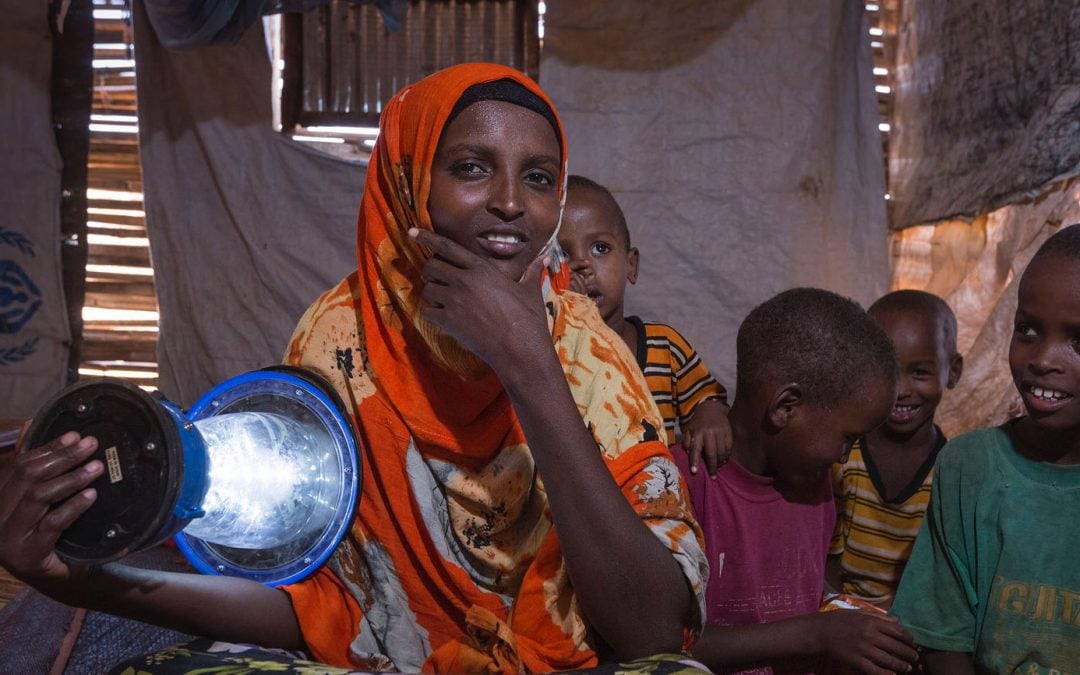Clean energy’s gains in technology and price could potentially impact refugees’ lives around the world.
For Earth Day 2015 our Energy Lab rounded up nine energy innovations we’re watching:
1. Pumping water with solar power
The solar water system, equipped with 278 solar panels and 69.5 KW power rating is located at the Dadaab refugee camp in Kenya and is capable of providing refugees a daily average of 280,000 litres of potable water.
Gravity Light is an innovative way of generating light and low levels of power from gravity, providing an alternative to expensive and hazardous kerosene lamps.
3. ‘Pee-power’ to light up refugee camps
A toilet that uses urine to generate electricity and can charge a mobile phone. It uses live microbes which feed on urine and convert it into power.
4. Bicycle that harvests water from air
Attached to the frame of the bike and powered by a small solar panel, the device cools down hot, humid air, and as the water condenses, droplets roll into the bottle. The movement of the bike helps send more air into the machine so water can collect faster.
5. Solar lamps in exchange for community service
Working in Rwanda with Great Lakes Energy, GBF created a project to provide a Sun King solar lantern to each of the 3,700 families that live in the Kiziba camp in western Rwanda. In exchange for a lantern, each recipient was required to provide community service in the camp.
This young man from Malawi rescued his family from famine by building a windmill out of scrap metal. Could we start to see user-designed windmills in refugee camps across the world?
7. The Desolenator – using the sun to produce clean water
Using nothing but sunlight, the Desolenator turns polluted or salty water into enough drinking water for a small family.
8. Portable solar powered mobile phone chargers
It’s a lightweight, durable, yellow brick with solar PV cells on one face. You leave it in the sun for about 8 hours and it has enough energy to charge a mobile phone or provide over 100 hours of light through LEDs.
The Liter of Light movement empowers communities to manufacture their own light solutions by converting empty plastic drinking bottles into 50-watt solar bulbs. The plastic bottles reflect sunlight during the day, providing light inside the home.
Did we miss anything? What would you add to this list? Comment below.
If you’d like to repost this article on your website, please see our reposting policy.

